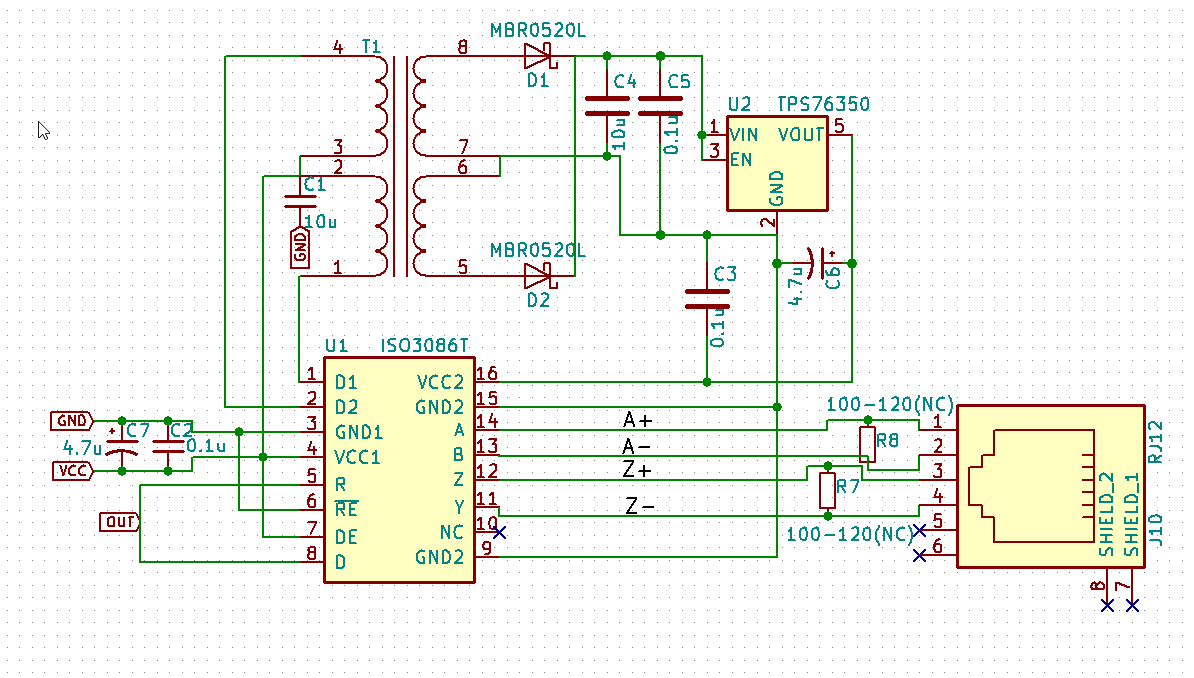Other Parts Discussed in Thread: ISO3086
Hi,
I am trying to build system to send clock signal over Ethernet cable using RS-485 protocol. I prepared proto-board with components mentioned in http://www.ti.com/lit/ug/sluu469/sluu469.pdf.
I connected together R and D pins and receiver and driver are always ON. After that I realized that if I touch D pin using unconnected wire (like proto-wires) the high current starts flowing (like 0.8A). Can somebody explain me what is wrong and why it happens? I need to add, that even if high current is not flowing, there is no signal on pin R/D. (I am sure that input signal on RS485 side is present). 

